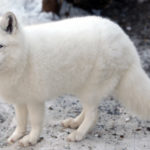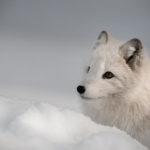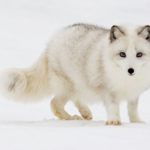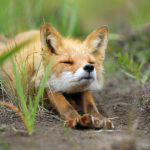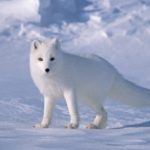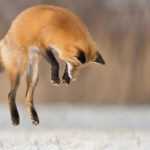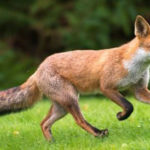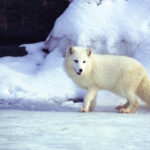Arctic foxes
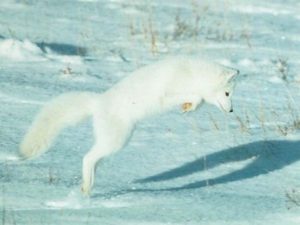 Arctic Foxes are probably one of the most amazing and interesting animals of the Russian Arctic. They are also called the polar fox, since there is much in common between a fox and a fox. First, they have muzzles with the only difference being that the Arctic fox is noticeably shorter; secondly, they are just as beautiful and fluffy, but the color of their hair is different. If the fox is fiery red with a red tint, then the fox fur can be of a variety of colors.
Arctic Foxes are probably one of the most amazing and interesting animals of the Russian Arctic. They are also called the polar fox, since there is much in common between a fox and a fox. First, they have muzzles with the only difference being that the Arctic fox is noticeably shorter; secondly, they are just as beautiful and fluffy, but the color of their hair is different. If the fox is fiery red with a red tint, then the fox fur can be of a variety of colors.
By the way, according to the color of the fur of this animal, white and blue fox are distinguished. The white arctic fox, as well as the hare, changes its wool twice a year from bright white winter to gray-brownish summer. The summer coat of the white polar fox is coarse and stiff, the winter hide is better than the summer skin – it is soft, silky and fluffy. The most valuable qualities of fox pelts are acquired in the beginning of winter. Therefore, it is necessary to hunt Arctic Fox in January-February.
Blue fox is even more beautiful – in its palette the color of the wool of flowers is even greater. His skin may be grayish with a blue glow, and silvery brown. Such individuals in our time are rare. The fox is slightly smaller in size than the fox. The length of the body of adults from half a meter to 75 cm, height up to 30 cm. Body weight does not exceed 10 kg. (usually 3-4 kg).
The Arctic fox lives in extremely low temperatures, in the Arctic. In Russia, he lives on both the mainland and the islands of the Arctic Ocean. Also, the polar fox lives in all countries whose territories are located beyond the Arctic Circle – in Scandinavia, the USA (Alaska), the islands of the Canadian archipelago, also in Greenland.
Arctic fox inhabits tundra and forest-tundra. For most of the year the beast conducts permanent migrations. Polar fox, although considered predatory animals of the dog family, but feeds not only on meat, but also on plants. From the vegetation prefers berries growing in this climatic zone, especially blueberries, eating coastal algae.

